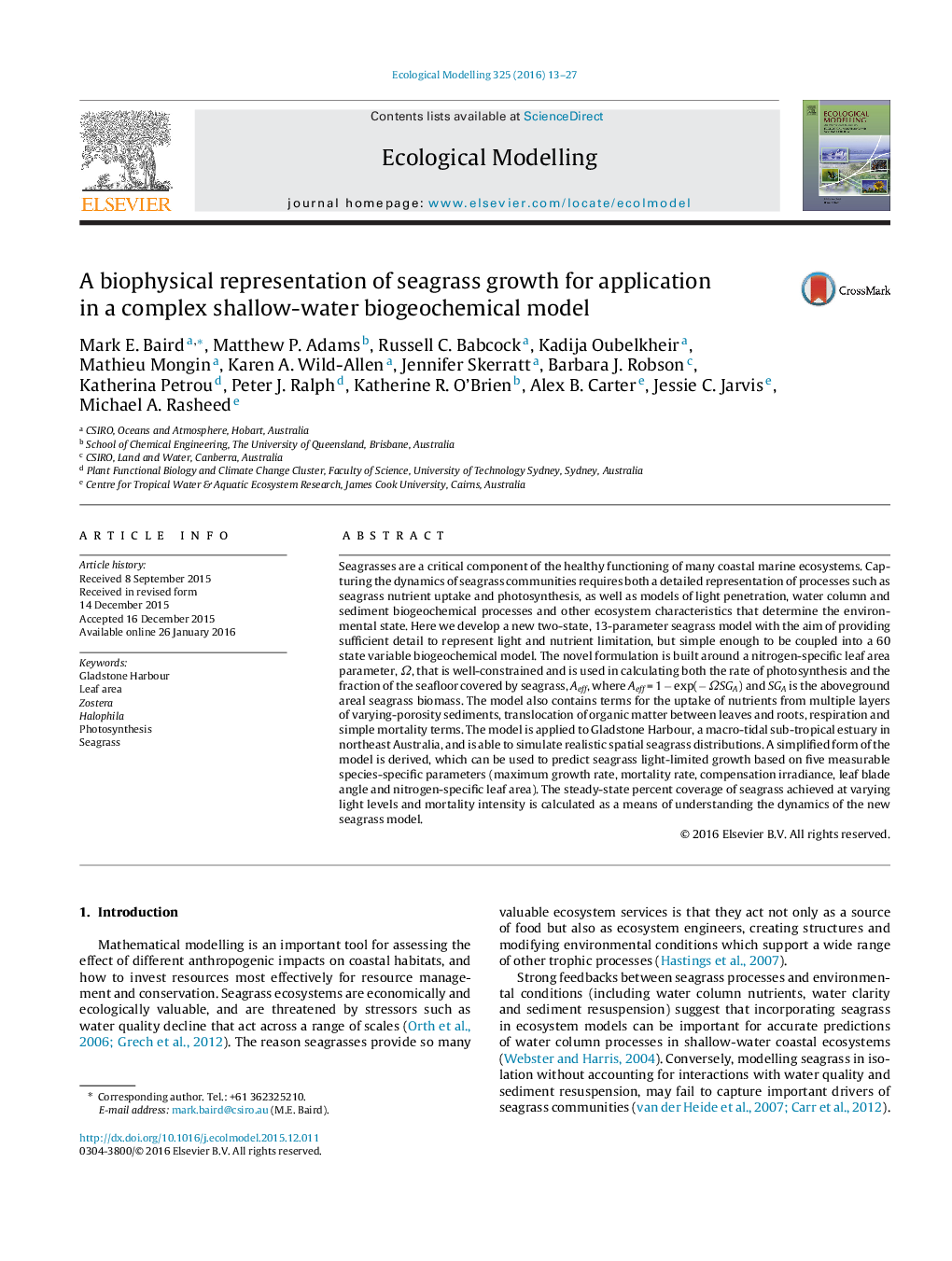| Article ID | Journal | Published Year | Pages | File Type |
|---|---|---|---|---|
| 4375579 | Ecological Modelling | 2016 | 15 Pages |
•New multi-species seagrass model developed.•Novel relationship between seagrass biomass and percent cover.•Physical/geometric basis for derivation of equations.•Model assessed in Gladstone Harbour, eastern Australia.•Dynamic analysis undertaken for light-limited growth.
Seagrasses are a critical component of the healthy functioning of many coastal marine ecosystems. Capturing the dynamics of seagrass communities requires both a detailed representation of processes such as seagrass nutrient uptake and photosynthesis, as well as models of light penetration, water column and sediment biogeochemical processes and other ecosystem characteristics that determine the environmental state. Here we develop a new two-state, 13-parameter seagrass model with the aim of providing sufficient detail to represent light and nutrient limitation, but simple enough to be coupled into a 60 state variable biogeochemical model. The novel formulation is built around a nitrogen-specific leaf area parameter, Ω, that is well-constrained and is used in calculating both the rate of photosynthesis and the fraction of the seafloor covered by seagrass, Aeff, where Aeff = 1 − exp(− ΩSGA) and SGA is the aboveground areal seagrass biomass. The model also contains terms for the uptake of nutrients from multiple layers of varying-porosity sediments, translocation of organic matter between leaves and roots, respiration and simple mortality terms. The model is applied to Gladstone Harbour, a macro-tidal sub-tropical estuary in northeast Australia, and is able to simulate realistic spatial seagrass distributions. A simplified form of the model is derived, which can be used to predict seagrass light-limited growth based on five measurable species-specific parameters (maximum growth rate, mortality rate, compensation irradiance, leaf blade angle and nitrogen-specific leaf area). The steady-state percent coverage of seagrass achieved at varying light levels and mortality intensity is calculated as a means of understanding the dynamics of the new seagrass model.
